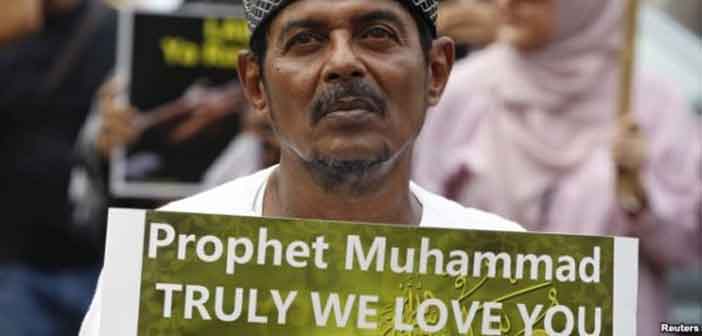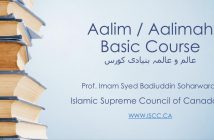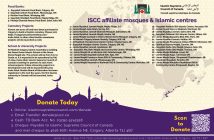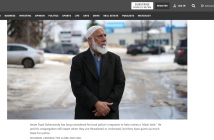By Linda Zachri
[NOTE: This article is a summary of the speech by Linda Zachri at a conference in Calgary, Canada. The conference was organized by the Muslims Against Terrorism (M.A.T.) on August 27, 2000.]
I do not consider myself an authority on Indonesia; however, I did live there for about 25 years, and have traveled extensively in the archipelago. I taught English as a Second Language at the University of Indonesia and also worked as an editor, interpreter and translator. In addition, I volunteered as a hospital worker in the area of rehabilitation and did a lot of work on various coordinating committees for medical seminars. Eventually,
I also taught Bahasa Indonesia or the Indonesian language to expatriates of various countries and gave cultural orientation sessions to Indonesians going abroad and to foreigners arriving in Indonesia.
Accounts of the present troubles in Indonesia tend to be reported in a manner that is simplistic, biased and out of context. Balanced reporting about the archipelago is difficult for a number of reasons – not the least of which are its vast area and the inaccessibility of some regions. Indonesia is a very large country; an archipelago of 17,500 islands which
straddle the equator over an area that spans roughly the distance from Seattle, Washington to Washington D.C., or the distance from Ireland to Azerbaijan. The islands themselves range in size from dots on the ocean to almost the size of small continents. Because of its location, the length of its days and the temperatures vary little throughout the year. It has two
seasons – “the hot season, which is slightly hotter than the wet season and the wet season, which is slightly wetter than the hot season.” It is a region of intense volcanism with over 100 volcanoes on the 51,755-sq. mi. area of Java alone. (You may have heard of the eruption of Krakatau in 1883, which produced tidal waves of up to, 35 meters in height claimed the lives of
thousands.)
The people of Indonesia are largely of Malay, or Malay-Polynesian stock. However, as you move eastward the islanders display a strong Melanesian strain as well, particularly on the islands of Ambon and Irian Jaya. There are over 300 ethnic groups and languages. Of the population of roughly 200 million, about 4 million are designated to be of Chinese origin and there are also smaller populations of Indian, Arab and European descent. The archipelago can be said to have gone through four eras with regard to religion. These eras can be loosely described as Animistic, Buddhist, Hindu and Muslim. (At present, it is between 85% and 90% Muslim.) It would be incorrect, however, to think of them as having distinct boundaries of time or place. Religious changes in the archipelago have aptly been described as evolutionary, rather than revolutionary” and there have been many times and places in which all of these beliefs have been practiced side by side, and even influenced each other.
Misconceptions abound with regard to Indonesia, sometimes even within the Islamic world itself. My husband has had the experience of being “challenged” by a gentleman who declared that Indonesians were not Muslims at all. His source of information is a well-known book entitled The Religion of Java by Clifford Geertz, which describes some practices of
Javanese mysticism adhered to only by a minority group in the central part of one island, Java. The information in this book can by no means be generalized to the other seventeen thousand, or even to the rest of Java.
The respected author, V.S. Naipaul in his book, Among the Believers, (which purports to be a source of information about the Islamic world) set the arrival of Islam at about the
same time as the first European colonialists. Actually the beginning of the spread of Islam goes back to about the 13th century and even earlier in some parts of Sumatra. Western authors usually describe Islam as having been brought by way of India or by Arab traders. Both these statements are true, but what is often overlooked is the influence of the Chinese in the spread of Islam. Despite an edict from the emperor, Chinese Muslims traveled
extensively, and even built one of the oldest mosques in Java.
Recent news stories appear to have done little to provide Canadians with a clear picture of the country. Reports of religious strife frequently give the impression that the whole country is up in arms. These reports rarely bother to mention the size of the archipelago and how little some parts can have in common with each other. It is rather like being abroad and hearing news reports about flooding in Medicine Hat, and then being asked by concerned locals if you are not worried about your relatives in Winnipeg. Some news reports refer to the “Balkanization of Indonesia”, and while there is a superficial resemblance in the multiplicity of ethnic groups, languages and religions, Indonesia differs from the Balkans in a number of important ways.
Firstly, in the Balkans ethnicity appears to be closely linked to religion, and both seem to be linked to territory. One Bosnian Croat gentleman even informed me that in the former Yugoslavia religion; ethnicity and land are “one in the same”. Such a situation can only come about, when a culture cultivates a long memory of historic battles, glorious victories and
humiliating defeats. These “memories” must be nurtured and replayed to the people in one form or another (in ballads, for example, or fireside tales) until they are capable of giving rise to almost the same degree of pleasure or pain as the original incident three hundred, four hundred or even a thousand years ago. Hence you have an old woman scolding British troops
about the behaviour of Cromwell’s men in Ireland in the seventeenth century. Or Serbs vowing to get their revenge after being defeated in battle by Muslims – in 1389. Indonesians as a group have not cultivated this kind of collective memory, even though they have had many opportunities to do so.
A number of other commonalties exist in this large country despite its extreme diversity. One is the use of Malay, which was established as a trade language and a common means of communication over centuries (and spread farther in Southeast Asia than the use of Latin for the same purpose ever did in Europe). In addition, there has always been a high degree of
movement within the archipelago, as can be seen by similarities in areas such as architecture, art forms and traditional dress. The unfortunate fact of slave trade and indentured servitude – even when the latter was perpetrated by the Dutch and the Portuguese – also played a part in
migrations and cultural exchanges.
The spread of religion and the movement of scholars and teachers were also among the unifying factors. Early written accounts from ancient Java refer to areas known as “Sima”, which appear to have functioned rather like the academia of ancient Greece. The Sima was independent of the feudal overlords and their independence was zealously guarded. The Sima were probably the forerunners of the areas in which, during Hindu times, scholars or “Santri” gathered for discussion and meditation. As the main religion changed from Hinduism to Islam, these areas remained, but the Santri were now Muslim scholars, and the areas, which they gathered became known as “pesantren”. In modern times pesantren are now actual schools, no longer exclusively religious in nature, but often with fully accredited curricula,
and even university-level courses. Pesantern can now be found all over the country. They still guard their independence, both in the scholastic and in the legal sense. Some of them even continue the very early practices of teaching meditation, self-defense and traditional healing. The current president of Indonesia, Abdurrahman Wahid is himself a member of a national
organization representing the pesantren.
Other hindrances to balanced reporting on Indonesia are much the same as for balanced reporting about any country which is “off the beaten path”. These difficulties include language barriers, the preconceptions of reporters and their contacts, and who has been, or has appeared to be, more accessible to the reporters. Even the instructions that reporters receive could affect their ability to report objectively. For example, if a reporter is assigned to investigate right-wing terrorism in a country, he may go there looking for right-wing terrorists and be oblivious to, or unwilling to report on the activities of left-wing terrorists. A reporter might even report an incident as having a political or religious slant when these elements play no part in the actual event. Last year I read an article in which a tourist was said to have been attacked in Indonesia by Muslim youths. The lady was in an area with a Muslim majority, but there was nothing to indicate she had been robbed in the name of religion. If you get mugged in New York by a mugger who may belong to visible minority, but I don’t think he would demand your money in the name of all oppressed minorities (I think he just says “Gimme
your dough!”) My purse was once snatched by a man whose dress and general appearance indicated that he was probably a Batak from north Sumatra.Bataks have a Christian majority, but I don’t recall him singing “Jesus Loves Me” as he sped away on his motorcycle!
Of even greater concern in a situation like Indonesia’s is the phenomenon of manufactured news. Many of us have seen the film, Wag the Dog and understand the chilling message behind the laughter. When the forces of Saddam Hussein invaded Kuwait in the 90’s, the public’s attention was drawn to a report of Iraqi soldiers entering a Kuwaiti hospital and taking away the incubators from the intensive care unit for neonates – leaving the sick
babies to die. The incident was supposedly witnessed by a young volunteer who gave an emotional account to the world press, including the BBC. To its credit, the BBC eventually exposed the story as a fraud – the incident never happened. However, I saw a reference to it in the Calgary Sun only two months ago – the damage was done. Similarly, two years ago there was a widely reported incident in Jakarta in which a Chinese area of the city was reportedly stormed by Indonesian soldiers and a large number or rapes and murders occurred. A series of shocking, horrible pictures were spread internationally by way of the Internet and even printed out and put on display in Calgary’s Chinatown. However, not long after these pictures were published, a group of Australian journalists came forward to declare that they had seen the pictures some time before the event had actually occurred. Some of the pictures were eventually traced to Asian porn magazines and a reporter identified one of the pictures as among those he had been shown earlier and told were of Indonesian soldiers brutalizing an East Timorese woman. I had seen the pictures myself and did not recognize the uniforms of
the soldiers, even though I had taught in a number of military hospitals. I also wondered why reports said that the soldiers had arrived in rented buses. Why would the army rent buses when they could requisition them or use their own transport?
Something happened in the Tomang district of Jakarta, but we may never know
exactly what, and even the Calgary Herald eventually recanted and reported that the number of rapes may not have been as many as earlier stated. Present “hot spots” reported in the news about Indonesia include the island of Timor – east and west. The north Sumatran province of Aceh, the eastern islands collectively known as Maluku (the Moluccas), and Irian Jaya, or the western half of the island of New Guinea. There have also been incidents in west Kalimantan (Borneo), in the island of Lombok, (near Bali) in north Sumatra and north Sulawesi (Celebes). It would be foolish to describe any of these incidents as having been motivated primarily by race or religion as the issues surrounding them are quite complex and by no means free of outside interference. Too often an incident has been reported as fighting between Christians and Muslims or between Indonesians and Chinese, when what was actually at issue was a land dispute (as in Maluku), or a clash of cultures between transmigrants from other
areas and the original population.
Events in Maluku have been reported as clashes between the Christian minority and the Muslim majority. Actually, Maluku is one of the few areas of Indonesia with a Christian majority. Reporting the unrest in East Timor as “ethnic cleansing” is equally inaccurate as the fighting is going on mostly between members of the same ethnic group – with a little help from their friends! Reporting on the “persecution of the Chinese” has a number of pitfalls as well. If you were suddenly transported to a busy street in Jakarta, do you think you could point out who was Chinese? Generations of intermarriage and the cross-adoption of children have guaranteed that there are a lot of “Chinese” in Indonesia with more than a healthy tan. Nor would it be helpful to ask a person his name as many ethnic Chinese have names
like Fajar, Harun, Dharma or Chandra. Names that sound of India or the Middle East. It would not be any more accurate to report the kinds of disturbances that have occurred in Jakarta and west Kalimantan as Muslim against Christian, or Muslim against Buddhist. Actually, the majority of Indonesian Chinese follow a religion that is a mixture of Confucianism, Buddhism and Taoism. A closer examination of the incidents reported would
again reveal that economic and cultural factors that instigated the violence were not necessarily laid out along religious or ethnic boundaries. The situation of the Indonesian Chinese is very complex and many of the problems involved represent a continuation of trends that began in colonial times. Continually stressing the religious aspect of a conflict when so many other issues are involved could actually serve to elevate this aspect to a
position of importance it should not have. Inevitably the choice of this emphasis also aids in reinforcing racial or religious stereotypes. It is a simplistic kind or reporting, or “dumping down of the news” which has done nothing to help resolve conflicts or to promote international understanding.






